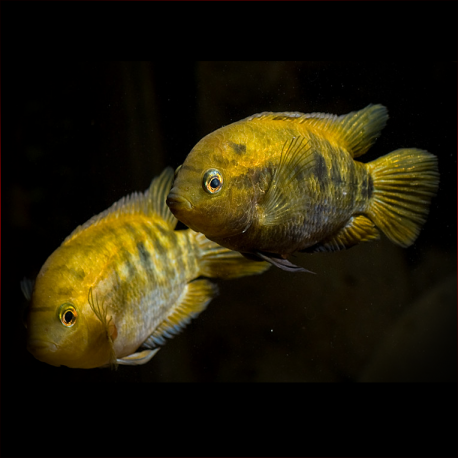More info
Datasheet
| Minimum Tank Size | 100 litres / 26.42 US gallons |
| Maximum Size | 17.5cm / 6.89inches |
| Temperature | 22°C / 71.60°F - 30°C / 86.00°F |
| Hardness | 0-20ºdH |
| pH | 7.0-8.0 |
General Description:
Relatively common in the hobby, the Rainbow Cichlid (Herotilapia Multispinosa) is a peaceful cichlid species, particularly in comparison to other Central American cichlids. With a maximum size of 17.5cm, it is an ideal choice for aquarists seeking a less aggressive CA cichlid species.
Aquarium Setup:
For proper care, a minimum tank size of 100 litres is recommended. The Rainbow Cichlid prefers a sandy substrate, although it would thrive in a tank with a muddy bottom (refer to table). Aquatic plants for cover are appreciated, and a slow to moderate water flow with subdued lighting is ideal.
Behaviour:
Known for its peaceful nature, the Rainbow Cichlid is best kept with tankmates of a similar disposition. Suitable companions include tetras, barbs, and other small peaceful cichlids. Bottom-dwelling species like small plecos and doradids also make good tankmates.
Feeding and Diet:
In the wild, the Rainbow Cichlid mainly consumes detritus, algae, and plant matter. In captivity, they are not picky eaters and thrive on a diet of high-quality cichlid pellets supplemented with live and frozen foods like brine shrimp. They will also accept vegetable or spirulina flakes.
Reproduction & Dimorphism:
Best bred in a separate tank, the Rainbow Cichlid parents will clean a spawning site, typically a smooth rock or slate surface. The female lays eggs which the male fertilizes, and both parents care for the eggs. Fry hatch within two days and become free-swimming within a week. Distinguishing between male and female can be challenging, but males may have more pointed dorsal and anal fins.
Habitat and Distribution:
The Rainbow Cichlid is native to eastern Honduras and ranges throughout Nicaragua and Costa Rica, predominantly in turbid waters with soft, muddy substrates. Its distribution spans from the River Patuca in Honduras to the River Matina in Costa Rica, and from the River Guasaule in Nicaragua to Costa Rican rivers Tempisque and Bebedero.

